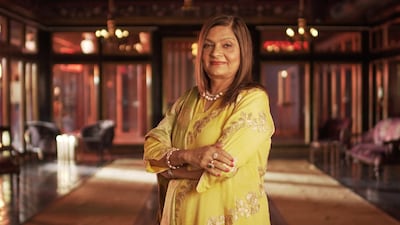
Sima Taparia is the matchmaker in new Netflix show 'Indian Matchmaking'. Netflix
Sima Taparia is the matchmaker in new Netflix show 'Indian Matchmaking'. Netflix
Why the process of 'Indian Matchmaking' crushed my confidence
As Netflix releases a new series based on India's arranged marriage system, Sonali Kokra gives her own account of the emotional tug-of-war she faced
Sonali Kokra
July 23, 2020


